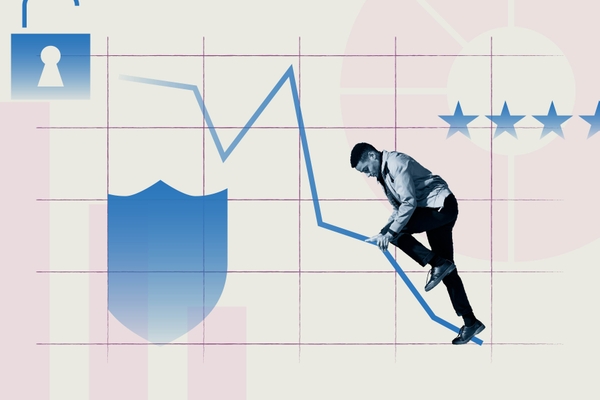
Fixed-income markets took a severe beating in 2022 as central banks administered monetary tightening to beat back surging inflation. While markets have seen a bounce-back, in the expectation that the tightening is close to the end, is the enthusiasm warranted?
“The bounce-back that we saw earlier this year has already waned since we are at fresh highs in the benchmark 10-year Government of Canada bonds. But there is still a case for seeing an end to monetary tightening, in Canada at least,” says Patrick O’Toole, vice-president, of global fixed income at Toronto-based CIBC Asset Management Inc., and the outgoing manager of the 4-star rated $4.7 billion Renaissance Corporate Bond Cl F. O’Toole is stepping down in late June. “The Bank of Canada is telling us that it’s staying on hold for now after its last rate hike,” says O’Toole, “Needless to say, that’s a prudent strategy after hiking rates over four percentage points in the last year.”
Still Some Economic Woes to Go
The Bank of Canada says that interest rate changes take about 18 to 24 months to fully work their way through the economy. “So, there should be further negative impacts as we go through 2023,” says O’Toole, a 34-year industry veteran and a member of a 20-person team that oversees about $100 billion in fixed-income assets. “But the Federal Reserve has more ‘runway’ in its rate hikes and may not be done until June. It may hike rates another one-half to three-quarter percentage points. Regardless, some optimism is still warranted. There are much higher yields now, as opposed to what they were at the onset of the pandemic.” O’Toole notes that in August 2020 the 5-year Government of Canada bond had a yield of 0.3%. Today, that yield is closer to 3.6%. “That’s near a 15-year high,” he says, “You can see why investors have been putting more money into bonds recently.” In a similar vein, U.S. 10-year bonds are now yielding 3.95%, versus 0.51% in August 2020.
Adam Ditkofsky, senior portfolio manager and incoming lead manager of the fund, notes that the outlook for interest rates at home depends on how the Canadian economy unfolds. “There is a lot of debate, whether there will be a soft landing, which is what central banks are trying to achieve, meaning that they are able to cool demand and inflation, without causing a major recession,” says Ditkofsky, “or will they cause things to break by raising interest rates too high with monetary tightening? And will they potentially reverse course, and say, ‘Now we have to start cutting’?” Ditkofsky agrees with O’Toole that we have not yet seen the full implications of the rate hikes.
Recession Risks Come with Bond Yield Slip
Both Ditkofsky and O’Toole are in the recession camp, for several reasons. “A big part of this [thesis] is consumers. They were benefitting from government stimulus because of the pandemic. But that’s not being replenished because governments are not providing stimulus cheques in Canada and the U.S.,” says Ditkofsky. “Couple that with the fact that consumers saw significant wealth destruction last year, and high inflation and its impact on purchasing power and higher debt costs. So the outlook for consumers is materially weakening.” Since both managers have a negative outlook for GDP for Canada and the U.S., they expect bond yields to slip gradually lower over the next 12 months.
The forecast for 10-year Government of Canada bonds yields is a range of 2.85% to 3.95%, while the range for U.S. bonds is 3% to 4.5%. “There is a lot of room for a lot of volatility. But with our expectations for a recession, we do expect that yields will come lower,” says Ditkofsky, adding that a recession is likely to happen in the second half of 2023, and it may take one or two more years for inflation to get closer to the 2% level that the Bank of Canada is seeking.
Rate Hikes May Have Gone Too Far
About a year ago, O’Toole recalls, it was expected that central banks would pause raising rates in the autumn and assess the impact on the economy. “But they took longer to get to that pause, and went farther in their rate hikes. They may have already gone too far, as they generally do. We saw the classic signs of a recession with an inverted yield curve, whereby 3-month yields moved above 10-year bond yields. That’s been a precursor for recessions for the last 50 years,” says O’Toole. “They are done in hiking rates in Canada, and nearly done in the U.S. But that doesn’t mean they will avoid a recession.”
In terms of portfolio management style, Ditkofsky maintains that little will change when O’Toole leaves at the end of June. “That is really a testament to the rigorous team-based approach and processes that we have in place. And the relationships we have with each other, and not just Pat and me, but the entire fixed income team,” says Ditkofsky, who joined CIBC in Sept. 2008, after earning an MBA at the Ivey School of Business. “Pat used to joke that if, God forbid, he was to have an accident tomorrow, I could slip into his spot, and nobody would notice the change in style. We have a very methodical and detailed process that leverages multiple risk-adjusted tools for us to add value. So, it’s the same case with me: if something happened to me, someone on the team would be able to quickly take over.”
From a performance standpoint, Renaissance Corporate Bond Cl F returned -5.38% for the year (ended Feb 22) versus -4.86% for the Canadian Corporate Fixed Income category. On a year-to-date basis, however, the fund has returned 1.22%, versus 0.99% for the category. Over the longer term, the fund returned an annualized 1.37% over the last five years, versus the category which returned an annualized 1.06%. Over 10 years, the fund returned an annualized 2.37%, versus 1.74% for the category.
The fund lagged the category last year because it holds higher-beta credits than the benchmark, “which is necessary to achieve its value-added target,” says Ditkofsky. “Although we started reducing our risks in the portfolio in late 2021, it wasn’t enough to compensate for the material spread widening that we saw in 2022. Shorter-dated, higher-quality bonds also saw material weakness in their spreads. They also performed poorly.” This year, however, the fund is doing better largely because the names that underperformed last year have started to outperform. “But we have been more defensive, especially as we saw yields falling for corporate bonds.”
Bond Portfolio Asset Mix
From a strategic viewpoint, the fund is a blend of investment-grade bonds, which account for 80% of the fund, and high-yield bonds (which are rated BB and lower) which account for 20%. Currently, there is 82% in investment-grade bonds and 17% in high-yield bonds, which indicates that the managers are slightly defensive in their approach.
“Our current asset mix is consistent with our view of recession risk,” says Ditkofsky. “High-yield spreads did not ‘cheapen up’ as much as investment-grade bonds did last year and have been very resilient in this market. We think they look expensive in some ways. So, it’s a prudent course of action to be slightly underweighted in high-yield.”
Investment-grade positions can each be as large as 2-3% of the portfolio, while high-yield positions are often 0.2%. The fund’s duration is 5.5 years, versus 5.6 years for a blended benchmark that includes the FTSE Canada All Corporate Bond Index and BofA Merrill Lynch US High Yield Index. The fund has a running yield of 5.85%.
On a sector basis, financial services are the largest sector at 26% of the portfolio, versus 35% for the blended benchmark; 12% in industrials, which is a neutral weighting; 15% real estate, which is 10 percentage points overweight; and 25% energy and pipelines, which is five percentage points above the benchmark. Currently, 84% of the fund is in Canadian securities and 16% in the US dollar, which is hedged back to the Canadian dollar.
Top Corporate Bond Picks
Running a portfolio of 480 to 500 securities, Ditkofsky cites, by way of example, Enbridge Inc. (ENB), which has a BBB-plus-rated bond maturing in June 2032 and is yielding 5.9%. “Enbridge is a best-in-class pipeline company which generates very strong cash flows, which are underpinned by long-term so-called take-or-pay contracts [which means that if customers don’t take them, they still have to pay],” Ditkofsky notes, adding that a large amount of Enbridge’s capital expenditures are behind them. “Their leverage ratio is 4.5 to five times debt to EBITDA [earnings before interest taxes depreciation and amortization].”
On the high-yield side, the managers like Service Corporation International (SCI), which has a BB-rated bond that is yielding 6.6% and dated for May 2031. “They are North America’s largest providers of funerals, cemeteries, and cremation services. They benefit from significant scale, dominant market share and stable cash flows. A big part of the thesis is aging demographics because Service Corp’s business continues to grow.”
Looking ahead, O’Toole believes that while recessions cause some pain, investment returns could be in the high single digits by year-end: “Even in a soft landing scenario, that central banks are striving for, we are still expecting closer to mid-single digit returns this year. Central banks are pretty much done raising interest rates. The bulk of the damage is behind them. Investors will be much happier this year, versus what they’ve seen in the last two.”









:quality(80)/cloudfront-us-east-1.images.arcpublishing.com/morningstar/VYKWT2BHIZFVLEWUKAUIBGNAH4.jpg)












